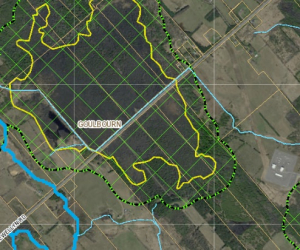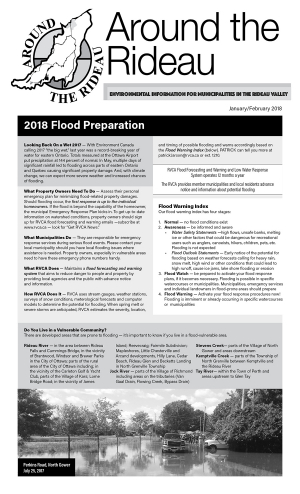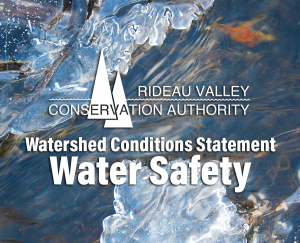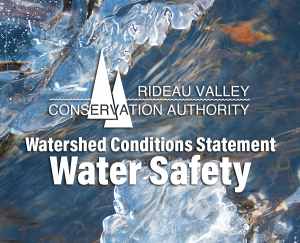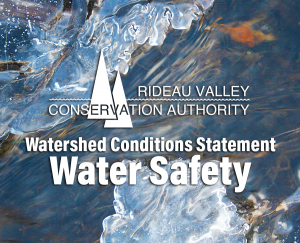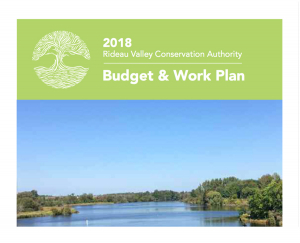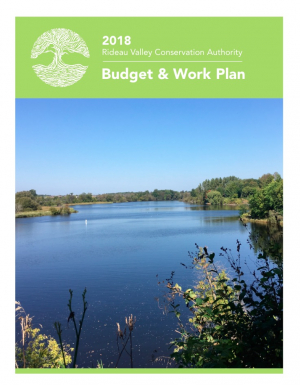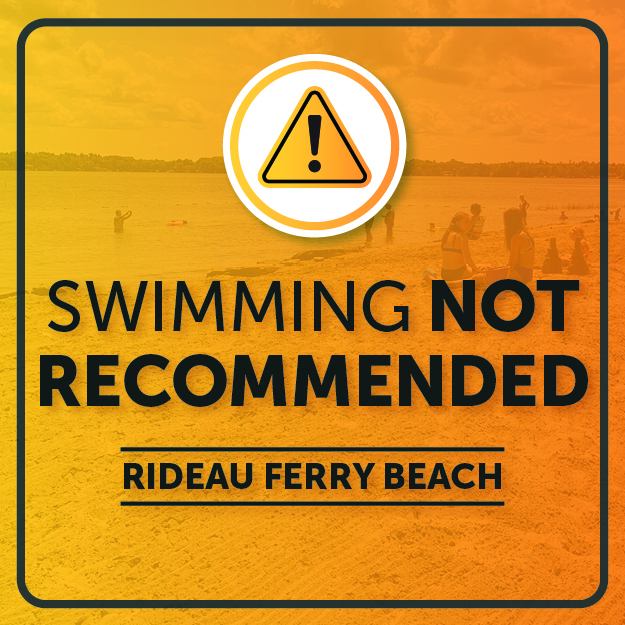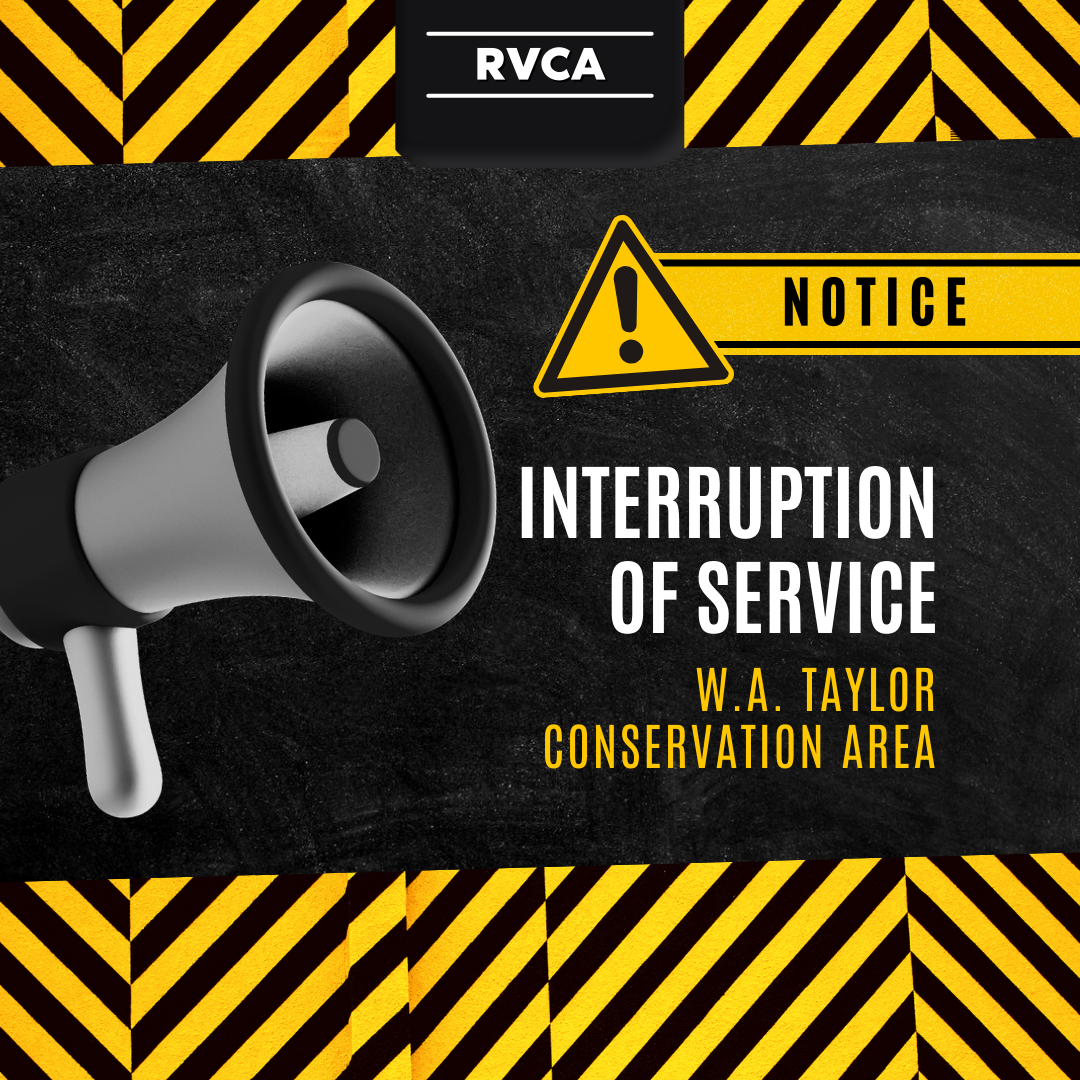Super User
Announcement: Goulbourn Wetland Complex No Longer Exempted from RVCA's Regulated Area
Since 2006, the Province has required Conservation Authorities to regulate development in wetlands and adjacent lands and the Rideau Valley Conservation Authority’s (RVCA) responsibilities are outlined in Ontario Regulation 174/06. At their meeting on January 25, 2018, the RVCA Board of Directors passed a motion to apply Ontario Regulation 174/06 to wetlands in the Goulbourn Wetland Complex that were identified as Provincially Significant by the Ministry of Natural Resources and Forestry (MNRF) in 2008. To-date, only wetlands identified in municipal Official Plans and zoning were regulated in this area. This recent decision by the Board brings the area in line with how wetlands are regulated in the rest of the Rideau watershed as the Goulbourn Wetland Complex had been given a special exemption. The exemption was put in place in 2009 by the RVCA’s Board of Directors at that time because of the creation of the Flewellyn Special Study Area by the City of Ottawa. The recent lifting of the exemption and the application of Ontario Regulation 174/06 as outlined above is effective immediately.
Notifying Property Owners
Notices have been sent to landowners whose property may be covered by or adjacent to wetlands identified as Provincially Significant by the MNRF in 2008. This means portions of their property may be subject to Ontario Regulation 174/06 that were previously exempt.
What Affect Does Ontario Regulation 174/06 Have?
Ontario Regulation 174/06 (Development, Interference with Wetlands and Alterations to Shorelines and Watercourses Regulation) under Section 28 of the Conservation Authorities Act, requires property owners to obtain the written permission of the RVCA prior to interfering in any way with the existing channel of a river, creek, stream or watercourse or for changing or interfering in any way (including hydrologic function) with a wetland. Therefore, property owners must receive approval from the RVCA prior to undertaking any development or site alteration within a Provincially Significant Wetland or within 120 metres of a Provincially Significant Wetland boundary. Development is defined as:
- The construction, reconstruction, erection or placing of a building or structure of any kind or changes to a building or structure that would result in an increase in size or the number of dwelling units,
- Site grading, and
- Temporary or permanent placing, dumping or removal of any material, originating on the site or elsewhere.
Why Was the Goulbourn Wetland Complex Exempted in 2009?
In 2008, the Goulbourn Wetland Complex was reevaluated and MNRF identified wetlands that were Provincially Significant. In 2009, the City of Ottawa’s Comprehensive Official Plan Amendment (OPA) which would have recognized these wetlands was appealed. The City established the Flewellyn Special Study Area as a temporary measure to work through wetland and drainage issues raised as part of the OPA appeal. In the interim, the City of Ottawa’s Official Plan indicated that no new development would be permitted in the area until the Special Study Area designation was removed. With this assurance, the RVCA’s Board of Directors decided to exempt the 2008 wetland boundaries from Ontario Regulation 174/06 while the Special Study Area was in place.
Why Has the Exemption Been Lifted?
In 2016, the Flewellyn Cumulative Effects Study was completed and the City of Ottawa presented the study’s conclusions to property owners, interested residents and the public. A new evaluation of the Goulbourn Wetland Complex was then completed and the MNRF released new Provincially Significant Wetland boundaries in 2017. Affected property owners were notified by both the MNRF and the City of Ottawa throughout the process and opportunities to challenge the boundaries were outlined. The next step is for the City to complete an OPA to adopt the new 2017 Provincially Significant Wetland boundaries.
In the fall, the City of Ottawa indicated that they were waiting until early 2018 to initiate the OPA process and would not bring an OPA to Committee until late 2018 or early 2019. This timeline gives property owners the 2018 growing season to hire a wetland evaluator to challenge wetland designations. Given this timing, a discussion was initiated with the RVCA’s Board of Directors. Any significant loss or destruction of wetlands in this area could lead to increased flooding of private property, increased flooding of municipal roads and infrastructure, impaired groundwater recharge areas, decreased baseline streamflow, impacted water quality and quantity, and damage to wildlife and aquatic habitat. The decision was made to lift the exemption and apply Ontario Regulation 174/06 to those wetlands designated as Provincially Significant in 2008 as an interim measure until the City’s OPA is complete. Once the City’s OPA process is completed, the RVCA will apply Ontario Regulation 174/06 to the final wetland boundaries adopted in the Official Plan.
For More Information Please Contact Us
We encourage you to contact our office if you have any questions or would like additional information, including a site-specific map of your property showing regulated areas.
You can contact one of our Resource Specialists at:
You can also view maps, Ontario Regulation 174/06 and RVCA’s development policies at "Regulations & Planning”Regulations & Planning”
Spring Headwaters Field Sampling
During the spring freshet we assess hundreds of headwater drainage features at various remote locations throughout the Rideau Valley watershed. We need your help conducting these assessments.
What to Expect
- You’ll spend a lot of time travelling to remote areas in an RVCA vehicle with one of our professionals. Your day will typically start at 8:00 a.m. and end at 4:00 p.m., however some days may be longer.
- You’ll be navigating steep slopes; entering cold and fast flowing water wearing hip waders; and sometimes working in inclement weather (but never in a storm).
When
- Tentative dates are March through April. Depending on the timing of the spring freshet, this opportunity may start earlier and/or end later
Skills and Competencies Required
- To be successful in this role, you will already need to be comfortable travelling long distances, working in cold temperatures in and around water, wading through streams and walking in difficult terrain. We are looking for volunteers with good communication skills, positive attitude and the ability to work in teams.
Skills and Competencies To Be Acquired
You will gain hands on experience:
- applying the Ontario Stream Assessment Protocol module to assess headwater drainage features
- wearing chest waders and working in small streams
- how to operate a multiparameter water chemistry probe
- how to measure surface water velocities
- recognizing sediment deposition
- detecting fish migration barriers
- how to identify various types of vegetation
Be Prepared
- You will need your own transportation to and from RVCA headquarters at 3889 Rideau Valley Drive in Manotick
- Read the RVCA's Participant Guide
You will need to provide:
- your own warm and water-resistant clothing (dressing in layers is a good idea);
- your own footwear and extra socks – wear closed toe shoes to get around, to wear chest waders you will require a thick pair of socks with length (no ankle socks);
- your own lunch, snacks and beverages.
We Supply
- electronic copy of the OSAP manual module: Assessing Headwater Drainage Features
- chest waders and reflective vests;
- sunscreen and DEET bug repellant;
- sampling equipment;
- supervision and instruction.
RVCA Contact
ATR - January-February 2017
Baxter Conservation Area Day Camps
Love being outside? Enjoy working with children? Looking to complete your 40 hours of volunteering for high school? Baxter Conservation Area is looking for mature, enthusiastic volunteers to help out with our nature-themed summer day camp. Volunteers must be going into grade 9 in the fall or older. Camp includes nature hikes, pond studies, crafts, games and swimming at Baxter's sandy beach.
For more information, please contact the Baxter team at:
613-489-3592
Water Safety: Another January Thaw Brings Unsafe Conditions on Rivers and Lakes Throughout Rideau Watershed
January 18, 2018 – Temperatures around the freezing point through the weekend and rain early next week will once again cause the loss of much of the snow cover and unstable ice conditions in the Rideau Valley.
As the snowmelt and rain runoff moves through the Rideau system, the ice cover will be shifting and, in some places, breaking up. Water can be expected to pond on top of the ice. Going on ice covered water bodies is not advisable for the next several days. Slightly more snow on the ground in the upper watershed west of Smiths Falls and more rain in the forecast than for the lower watershed could cause a marked rise on all lakes. Docks and shorelines could be subjected to ice damage.
Levels on the Rideau Canal reservoir lakes, Big Rideau and Bobs, are close to normal for the time of year. The other two reservoir lakes, Upper Rideau and Wolfe, have levels above normal as a result of the mild weather last weekend. However, all four have capacity to accommodate the snowmelt and rain runoff. The ice cover can be expected to shift on each and be unstable for several days until colder temperatures return.
Parents should ensure that children understand the hazards of playing around watercourses in the winter and all watershed residents are advised to stay off of the ice on rivers and streams and avoid icy and snow covered streambanks where footing can be unpredictable.
Conservation Authority staff will continue to monitor conditions and issue further statements as conditions warrant.
(WCS - 2/2018)
Water Safety: Another January Thaw Brings Unsafe Conditions on Rivers and Lakes Throughout Rideau Watershed
January 18, 2018 – Temperatures around the freezing point through the weekend and rain early next week will once again cause the loss of much of the snow cover and unstable ice conditions in the Rideau Valley.
As the snowmelt and rain runoff moves through the Rideau system, the ice cover will be shifting and, in some places, breaking up. Water can be expected to pond on top of the ice. Going on ice covered water bodies is not advisable for the next several days. Slightly more snow on the ground in the upper watershed west of Smiths Falls and more rain in the forecast than for the lower watershed could cause a marked rise on all lakes. Docks and shorelines could be subjected to ice damage.
Levels on the Rideau Canal reservoir lakes, Big Rideau and Bobs, are close to normal for the time of year. The other two reservoir lakes, Upper Rideau and Wolfe, have levels above normal as a result of the mild weather last weekend. However, all four have capacity to accommodate the snowmelt and rain runoff. The ice cover can be expected to shift on each and be unstable for several days until colder temperatures return.
Parents should ensure that children understand the hazards of playing around watercourses in the winter and all watershed residents are advised to stay off of the ice on rivers and streams and avoid icy and snow covered streambanks where footing can be unpredictable.
Conservation Authority staff will continue to monitor conditions and issue further statements as conditions warrant.
(WCS - 2/2018)
January 12, 2018 – With unusually warm temperatures melting much of the snow cover, water levels are rising throughout the Rideau watershed bringing on unstable ice conditions.
Levels can be expected to continue to rise through the day until a forecast rapid freeze occurs mid-afternoon. In faster flowing stream sections, ice has broken up and been moved downstream and there is the potential for ice jamming that could cause localized high water situations.
On lakes and flat stream sections, the ice will have been lifted by the increased water levels and have meltwater ponded on the surface. As temperatures drop, that water will freeze but it will not be sufficiently strong for a few days of cold temperatures.
Parents should ensure that children understand the hazards of playing around watercourses in the winter and all watershed residents are advised to stay off of the ice on rivers and streams and avoid ice and snow covered streambanks where footing can be unpredictable.
Conservation Authority staff will continue to monitor conditions and issue further statements as conditions warrant.
(WCS - 1/2018)
January 12, 2018 – With unusually warm temperatures melting much of the snow cover, water levels are rising throughout the Rideau watershed bringing on unstable ice conditions.
Levels can be expected to continue to rise through the day until a forecast rapid freeze occurs mid-afternoon. In faster flowing stream sections, ice has broken up and been moved downstream and there is the potential for ice jamming that could cause localized high water situations.
On lakes and flat stream sections, the ice will have been lifted by the increased water levels and have meltwater ponded on the surface. As temperatures drop, that water will freeze but it will not be sufficiently strong for a few days of cold temperatures.
Parents should ensure that children understand the hazards of playing around watercourses in the winter and all watershed residents are advised to stay off of the ice on rivers and streams and avoid ice and snow covered streambanks where footing can be unpredictable.
Conservation Authority staff will continue to monitor conditions and issue further statements as conditions warrant.
(WCS - 1/2018)
2018 Budget & Work Plan
The Rideau Valley Conservation Authority 2018 Budget & Work Plan is now available. Click here to view it or find it under Annual Work Plans in the Publications section of the website.

